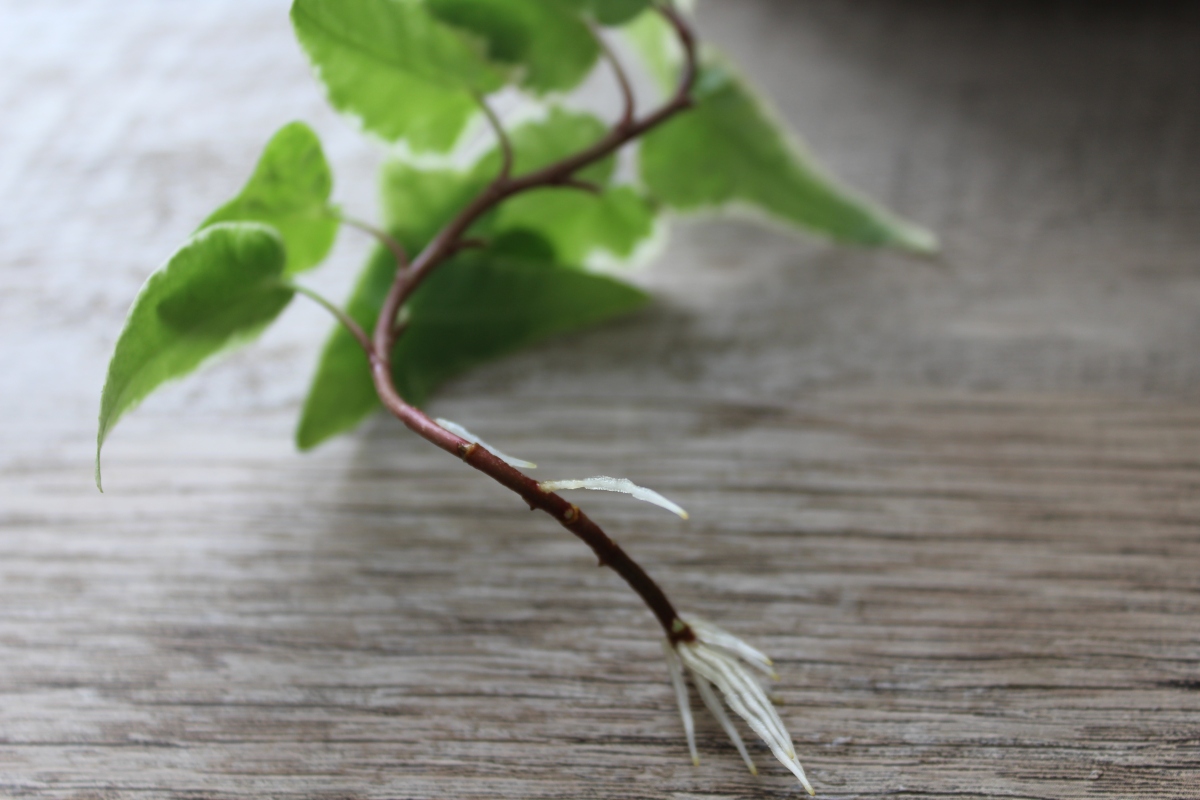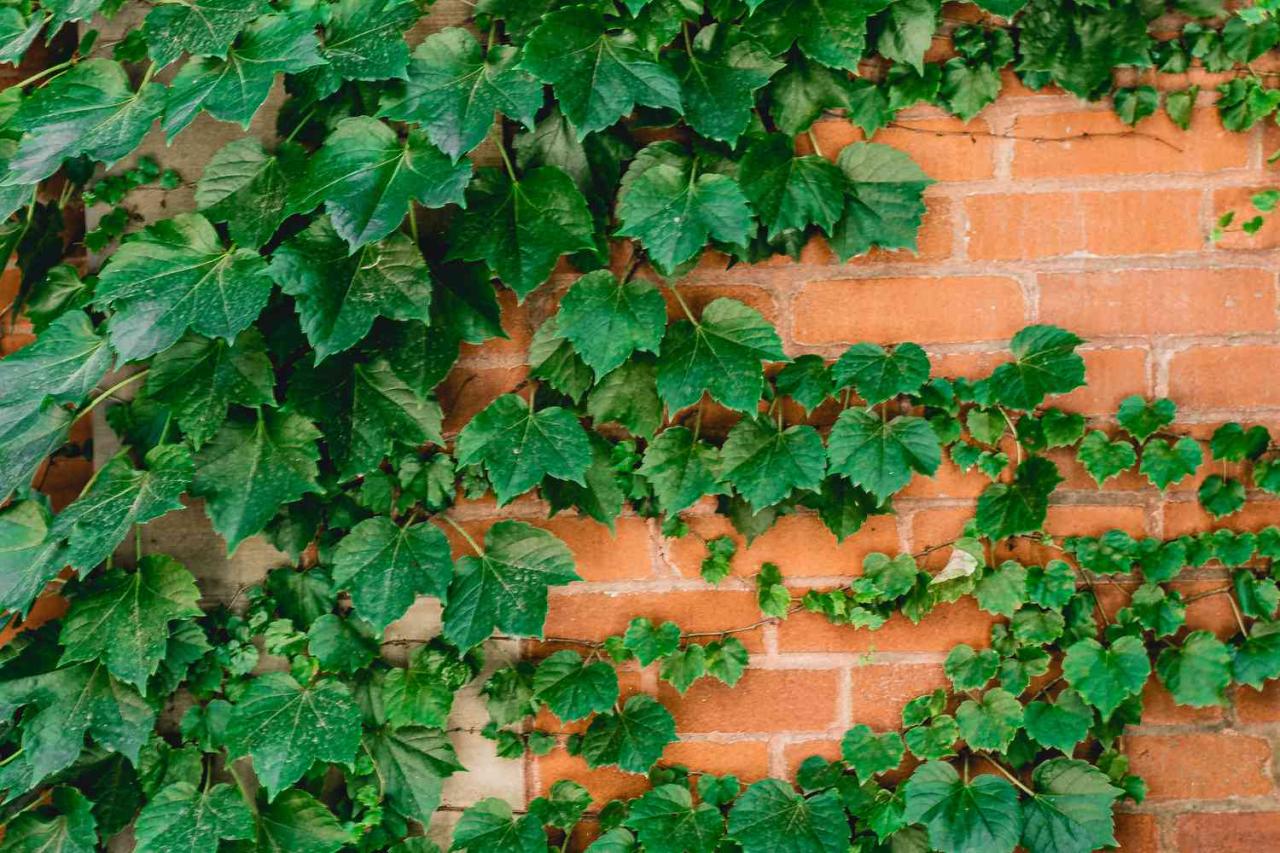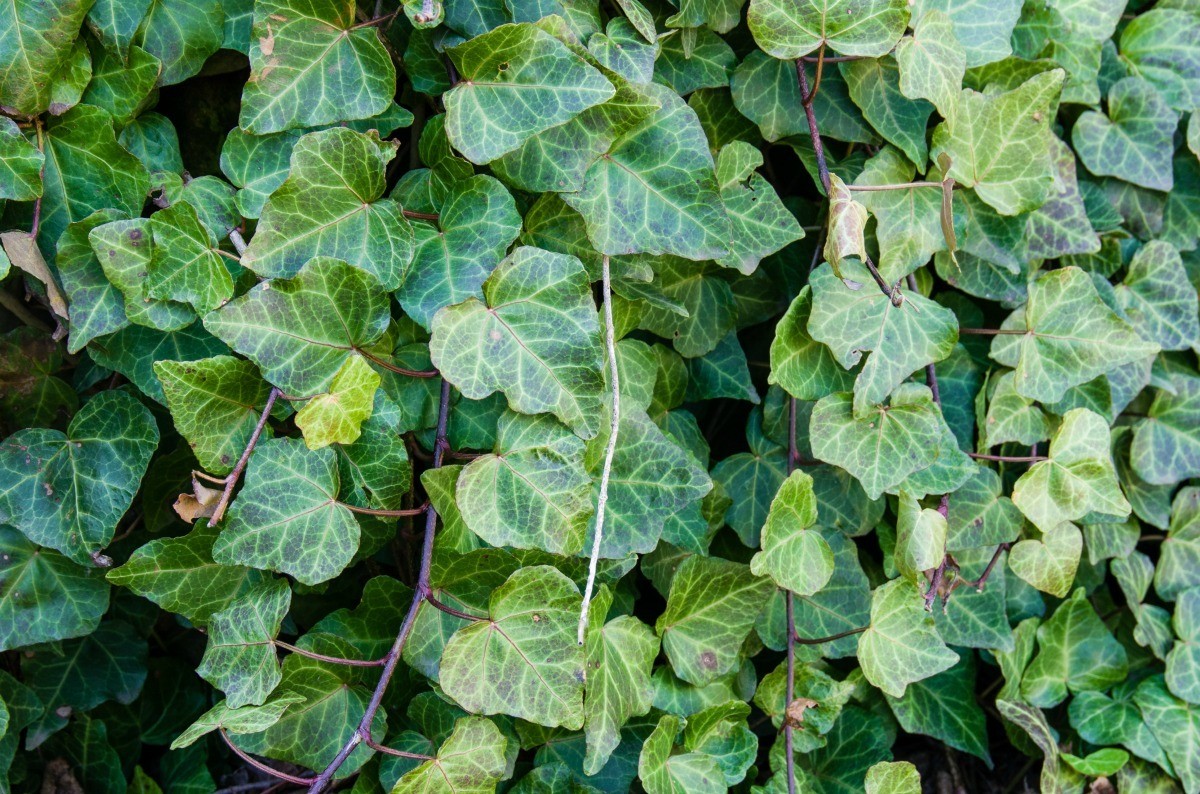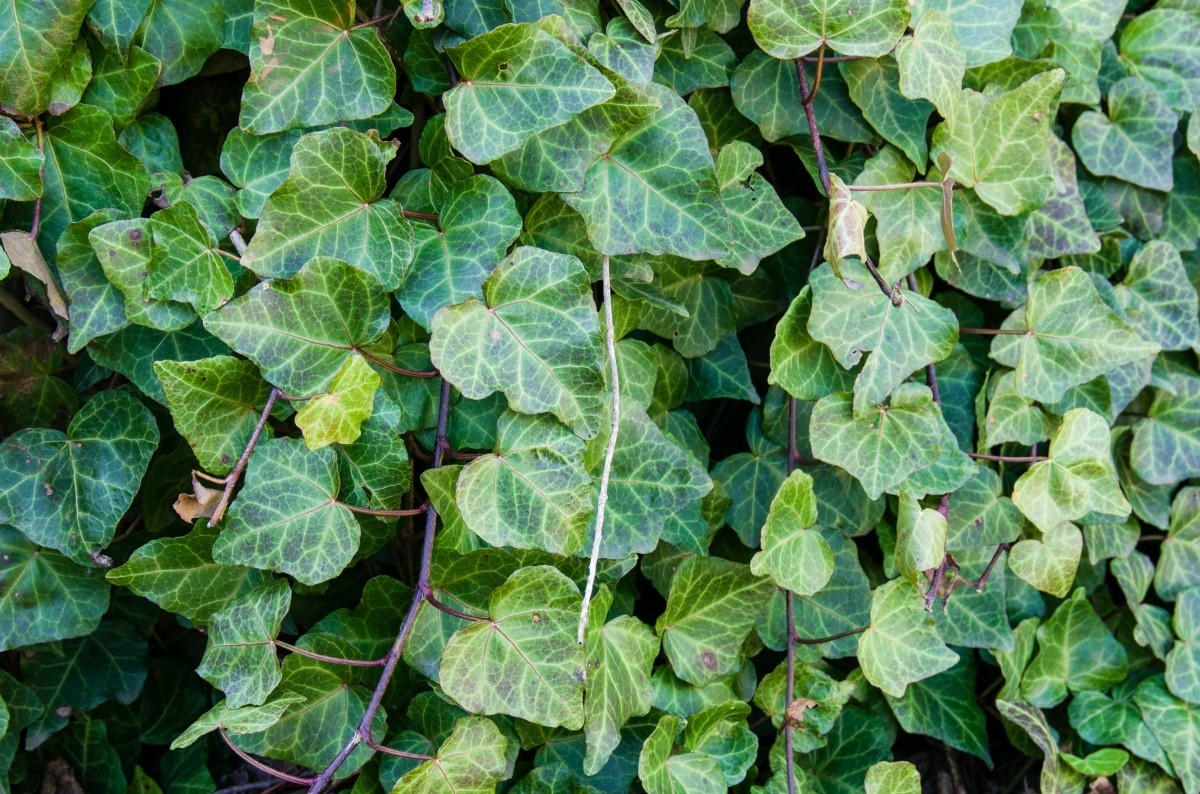Unlock the Magic of Ivy Propagation – Grow a Lush, Green Paradise: From ancient symbolism to modern landscaping, ivy has captivated hearts and minds for centuries. Its verdant tendrils climb walls, drape over trellises, and create breathtaking carpets of green, offering a sense of tranquility and natural beauty.
But beyond its aesthetic appeal, ivy boasts a rich history and a multitude of uses, from traditional medicine to innovative design solutions. This guide delves into the secrets of ivy propagation, empowering you to cultivate your own lush, green paradise.
Whether you’re a seasoned gardener or a novice green thumb, mastering the art of ivy propagation is a rewarding journey. From the basics of cuttings and layering to the nuances of choosing the right ivy variety, this comprehensive guide provides the knowledge and inspiration you need to transform your outdoor space into a vibrant sanctuary.
The Allure of Ivy

Ivy, with its tenacious tendrils and verdant foliage, has captivated human imagination for centuries. Its enduring presence in art, literature, and folklore speaks to a deep-rooted fascination with its resilience and symbolism.
Historical Significance and Cultural Symbolism
Ivy’s association with longevity, faithfulness, and immortality dates back to ancient civilizations. In Greek mythology, ivy was sacred to Dionysus, the god of wine, revelry, and the theatre. It was believed to represent the intoxicating effects of wine and the boundless energy of life.
In Roman culture, ivy was associated with Bacchus, the Roman equivalent of Dionysus, and was often used in garlands and wreaths to celebrate feasts and festivals.
Diverse Uses of Ivy
Beyond its symbolic significance, ivy has been utilized for various practical purposes throughout history. Its versatility extends from landscaping and decoration to medicinal applications and even as a source of food.
Landscaping and Decoration
Ivy’s ability to climb and cover surfaces makes it a popular choice for landscaping and decoration. Its dense foliage provides a natural screen for privacy, and its trailing vines can add a touch of elegance to walls, fences, and trellises.
Medicinal Purposes
Some species of ivy, such as English ivy (Hedera helix), have been used in traditional medicine for centuries. Extracts from ivy leaves have been used to treat respiratory ailments, skin conditions, and even certain types of cancer. However, it’s crucial to consult with a healthcare professional before using ivy for medicinal purposes, as some species can be toxic if ingested.
Food Source
Ivy berries, while not a common food source, have been used in some cultures as a source of food and even for making wine. However, it’s essential to note that ivy berries can be toxic in large quantities, and consumption should be done with caution and under the guidance of an expert.
Anecdotes and Stories about Ivy
Ivy’s enduring presence in literature, art, and folklore has led to a wealth of stories and anecdotes. In Shakespeare’s play “Henry V,” the character of Falstaff is described as being “covered with ivy” due to his age and wisdom. In the novel “Wuthering Heights” by Emily Brontë, the wild and untamed landscape is often described with images of ivy, reflecting the passionate and tumultuous nature of the characters.
“The ivy, with its dark green leaves and tendrils, seemed to symbolize the enduring power of nature, its ability to thrive even in the harshest conditions.”
The Power of Propagation
The magic of ivy propagation lies in its remarkable ability to create new plants from existing ones. This process, known as propagation, allows you to effortlessly expand your ivy collection, share with friends, or even create a lush, green paradise in your own backyard.
The best part? Ivy is incredibly easy to propagate, making it a rewarding experience for gardeners of all levels.
Methods of Ivy Propagation
There are three primary methods of ivy propagation: cuttings, layering, and division. Each method offers unique advantages and considerations, allowing you to choose the best approach based on your needs and preferences.
Cuttings
Cuttings involve taking a piece of stem from a healthy ivy plant and encouraging it to develop roots. This method is widely considered the most popular and efficient way to propagate ivy.
- Choose the Right Cuttings:Select healthy, non-flowering stems with at least two nodes (the points where leaves grow).
- Prepare the Cuttings:Make a clean cut just below a node using a sharp knife or pruning shears. Remove any leaves below the waterline to prevent rotting.
- Root the Cuttings:Place the cuttings in a rooting medium such as a mixture of peat moss and perlite, or a water-filled container. Ensure the medium is kept moist, and the cuttings are placed in a warm, bright location out of direct sunlight.
- Monitor and Transplant:After several weeks, the cuttings should develop roots. When the roots are approximately 1 inch long, gently transplant the new plants into individual pots with well-draining potting soil.
Layering
Layering involves encouraging roots to develop on a stem while it is still attached to the parent plant. This method is particularly suitable for ivy that grows close to the ground.
Unlocking the magic of ivy propagation allows you to create a lush, green paradise with minimal effort. Just like with ivy, you can also propagate roses from cuttings, expanding your garden’s beauty with vibrant blooms. Learn how to successfully propagate roses from cuttings with expert tips and tricks in this comprehensive guide: How To Propagate Roses From Cuttings: Expert Tips for a Lush, Colorful Garden.
Whether you’re a seasoned gardener or a novice, these techniques will help you create a flourishing garden filled with the captivating colors and fragrances of roses, just like you can achieve with a thriving ivy landscape.
- Select a Stem:Choose a healthy stem that is flexible and can be bent to touch the ground.
- Prepare the Stem:Make a small cut on the underside of the stem, just above a node. You can also gently scratch the bark in this area to encourage root development.
- Layering the Stem:Bend the stem to the ground and secure it in place with a piece of wire, rock, or other weight. Cover the cut portion with soil, ensuring the tip of the stem remains above ground.
- Monitor and Separate:Keep the soil moist and allow the stem to grow for several weeks. When new growth appears on the layered stem, it indicates that roots have formed. You can then carefully separate the new plant from the parent plant and transplant it into a pot or garden bed.
Division
Division is a method of propagation that involves separating a mature ivy plant into smaller, individual plants. This method is best suited for ivy that has grown into a large, dense clump.
- Prepare the Plant:Gently loosen the ivy plant from its container or garden bed, ensuring that you do not damage the roots.
- Divide the Plant:Use a sharp knife or pruning shears to carefully divide the ivy into smaller sections, each with its own roots and foliage.
- Repot the Divisions:Plant the divided ivy sections in individual pots or directly into the garden, ensuring that the roots are spread out and the soil is firmly packed around them. Water the new plants thoroughly.
Optimal Time for Propagation
The optimal time for ivy propagation is typically in the spring or early summer, when the weather is warm and the plant is actively growing. This period provides the best conditions for root development. However, you can propagate ivy in other seasons, depending on your climate and specific variety.
Environmental Factors
Several environmental factors can influence the success of ivy propagation.
- Temperature:Ivy thrives in warm temperatures, with an ideal range of 65-75 degrees Fahrenheit. Avoid exposing cuttings or layered stems to extreme temperatures.
- Humidity:Ivy prefers high humidity levels. Mist the cuttings or layered stems regularly to maintain a moist environment.
- Light:Ivy needs bright, indirect light to grow healthy roots. Avoid placing cuttings or layered stems in direct sunlight, which can scorch the leaves.
Cultivating a Green Paradise

Once you have successfully propagated your ivy cuttings, it’s time to nurture them into a thriving, lush green paradise. The key to success lies in understanding the specific needs of your ivy variety and providing them with the right environment to flourish.
Ideal Location for Ivy Growth
Selecting the perfect spot for your ivy is crucial for its growth and overall health. Consider the following factors:
- Light:While most ivy varieties thrive in partial shade, some prefer full sun. English ivy, for example, thrives in dappled sunlight, while Boston ivy prefers full sun exposure. Observe your ivy’s growth habits to determine its ideal light conditions.
- Soil:Ivy prefers well-drained soil that is rich in organic matter. A slightly acidic pH is optimal for most ivy varieties. If your soil is too compact, amend it with compost or peat moss to improve drainage and aeration.
Just as you can cultivate a stunning rose garden by propagating roses from cuttings, as detailed in How To Propagate Roses From Cuttings: Unveil the Secrets to a Stunning Rose Garden , you can also easily create a lush, green paradise with ivy.
Ivy’s versatility allows it to thrive in various environments, making it an ideal choice for both indoor and outdoor spaces. Whether you prefer cascading vines or ground cover, propagating ivy offers a simple and rewarding way to transform your surroundings.
- Drainage:Ivy is susceptible to root rot in poorly drained soil. Ensure the planting location has good drainage to prevent waterlogging and ensure healthy root development.
Types of Ivy and Their Unique Characteristics
There are numerous ivy varieties, each with its own distinct characteristics and growth habits. Here are some popular types:
- English Ivy (Hedera helix): A classic choice for ground cover, English ivy is known for its fast growth rate and ability to climb walls and fences. It features dark green, lobed leaves and produces small, inconspicuous flowers in autumn.
- Boston Ivy (Parthenocissus tricuspidata): This vigorous climber is prized for its striking fall foliage, which turns brilliant shades of red and orange. It features large, three-lobed leaves and clings to surfaces using aerial rootlets.
- Algerian Ivy (Hedera canariensis): A fast-growing variety with large, glossy leaves, Algerian ivy is often used as a ground cover or to create a cascading effect in hanging baskets.
- Irish Ivy (Hedera hibernica): Similar to English ivy, Irish ivy is a hardy climber with larger, more deeply lobed leaves. It is known for its tolerance to cold temperatures and its ability to withstand harsh conditions.
Proper Care for a Thriving Ivy
Once your ivy is planted, consistent care is essential for its continued growth and health. Follow these guidelines:
- Watering:Keep the soil consistently moist, but not waterlogged. Water deeply and allow the top inch of soil to dry out between waterings.
- Fertilization:Feed your ivy with a balanced fertilizer during the growing season (spring and summer). Apply fertilizer according to the manufacturer’s instructions.
- Pest Control:Ivy is relatively pest-resistant, but it can be susceptible to aphids, spider mites, and scale. Monitor your ivy regularly for signs of pests and treat them promptly using organic insecticides or horticultural oil.
Design Inspiration: Unlock The Magic Of Ivy Propagation – Grow A Lush, Green Paradise
Ivy’s versatility makes it an exceptional choice for a wide range of landscaping designs. Its adaptability to various conditions, from sunny walls to shady corners, allows it to create stunning visual effects.
Here are some creative ways to use ivy in landscaping:
Vertical Gardens
Vertical gardens are becoming increasingly popular, and ivy is an excellent choice for creating lush, green walls. Its trailing habit allows it to cascade down walls and fences, adding a touch of natural beauty to any space.
Design |
Description |
Ivy Variety |
|---|---|---|
Living Wall |
A vertical garden created using a frame or grid system, with ivy planted in pockets or containers. |
English Ivy (Hedera helix) |
Green Screen |
A dense, vertical planting of ivy used to create a privacy screen or to block unwanted views. |
Boston Ivy (Parthenocissus tricuspidata) |
Ground Cover, Unlock the Magic of Ivy Propagation – Grow a Lush, Green Paradise
Ivy can also be used as a ground cover to create a lush, carpet-like effect. Its ability to spread quickly and suppress weeds makes it an ideal choice for areas that are difficult to maintain.
- Shady areas:Ground ivy (Glechoma hederacea) thrives in shade and is known for its fast-spreading habit.
- Dry areas:Algerian ivy (Hedera canariensis) is drought-tolerant and can thrive in dry, sunny conditions.
Container Planting
Ivy can be grown in containers to add a touch of greenery to patios, balconies, and indoor spaces. Its trailing habit makes it perfect for hanging baskets and planters.
- Hanging baskets:Use varieties like Swedish ivy (Plectranthus verticillatus) for a cascading effect.
- Planters:Choose varieties like Irish ivy (Hedera hibernica) for a more compact and bushy growth habit.
“Imagine a lush, green paradise, where ivy drapes gracefully over stone walls, creating a tapestry of emerald hues. Sunlight filters through the leaves, casting dappled shadows on the ground below. The air is filled with the sweet scent of blossoms, and the gentle rustling of leaves creates a symphony of nature’s harmony.”
Ivy Varieties
There are many different varieties of ivy, each with its own unique characteristics. Choosing the right variety for your design is essential for success.
- English Ivy (Hedera helix):A classic choice for ground cover and vertical gardens. It features dark green leaves with five lobes and can tolerate a wide range of conditions.
- Boston Ivy (Parthenocissus tricuspidata):Known for its vibrant fall foliage, Boston ivy is a popular choice for climbing walls and fences. Its leaves turn brilliant shades of red and orange in autumn.
- Algerian Ivy (Hedera canariensis):A fast-growing variety that can tolerate dry conditions. It features large, glossy leaves and is often used as a ground cover.
- Ground Ivy (Glechoma hederacea):A low-growing, spreading variety that is ideal for shady areas. Its small, heart-shaped leaves are a vibrant green color.
- Swedish Ivy (Plectranthus verticillatus):A trailing variety with succulent, fleshy leaves. It is often used in hanging baskets and planters.
- Irish Ivy (Hedera hibernica):A vigorous, fast-growing variety that is often used for ground cover. It features large, glossy leaves and can tolerate a wide range of conditions.
Outcome Summary

With its captivating history, diverse applications, and enchanting beauty, ivy offers a unique opportunity to connect with nature and create a personal haven. By unlocking the magic of ivy propagation, you can unlock a world of possibilities, transforming your outdoor space into a lush, green paradise that reflects your own unique style and vision.
So, gather your tools, choose your ivy variety, and embark on this rewarding journey of cultivation and design.
Question Bank
What are the best types of ivy for beginners?
English ivy (Hedera helix) and Boston ivy (Parthenocissus tricuspidata) are popular choices for beginners due to their adaptability and ease of care.
Can I propagate ivy from cuttings taken from a mature plant?
Yes, taking cuttings from a mature ivy plant is a common and successful method of propagation.
How often should I water my ivy plants?
Ivy prefers consistently moist soil but dislikes being waterlogged. Water deeply when the top inch of soil feels dry to the touch.
Is ivy poisonous to pets?
Yes, ivy can be toxic to pets, especially cats and dogs. Keep ivy out of reach of pets and monitor them closely if they come into contact with it.
